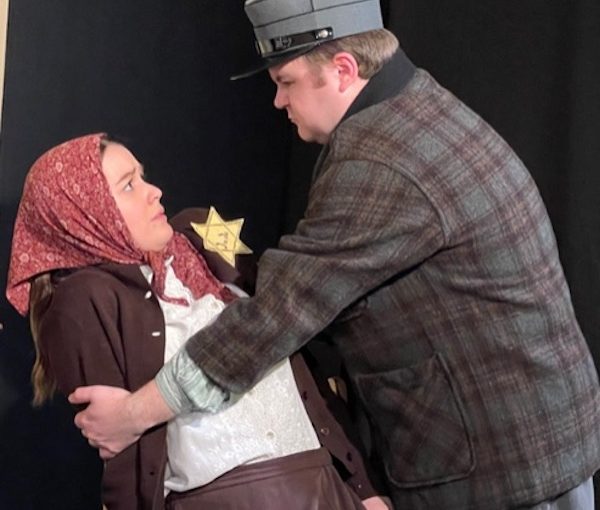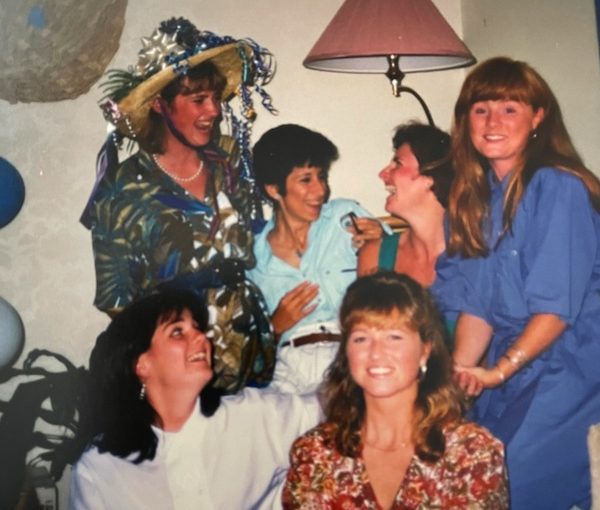As children, most of us at least once created a space of our own built of cushions, sheets, cardboard, branches, tables, almost anything – a space of our own that mimicked the house in which or near which it was built. This is a cross-cultural phenomenon that serves to help children establish their identities, according to David Sobel.
Sobel is a faculty member in the education department at Antioch University in New England. The author of Children’s Special Places: Exploring the Role of Forts, Dens and Bush Houses in Middle Childhood, he teaches conceptual development in science education, a course called the Ecology of Imagination Childhood.
“I’m teaching upcoming teachers in a master’s program, so folks with undergrad degrees, most of whom have done other stuff and are coming back,” he said. “The first thing that is interesting [about kids building their own spaces] is that this is a fairly cross-cultural phenomenon. Not necessarily all children do it, but a lot of children do it in different cultures and settings around the world. They tend to do it between the ages of 6 and 12, therefore, it suggests this is some sort of genetically determined behavior that serves some kind of survival value.”
According to Sobel, there are a couple of different goals achieved through this practice. One is that they are creating another world or a home away from home. Young kids will do this inside the house. As they get to the ages of 5, 6 or 7, they start to do it outside, but near the house.
 “They will gradually do it further away from the house, as a home they’ve created rather than that their parents have created, and it’s a way for them to establish themselves as unique individuals out in the world,” he said. “So, it has the function of identity creation … a special place or den, as a chrysalis out of which a butterfly will emerge. The butterfly is the self of the child that will emerge around the ages of 12 or 13.”
“They will gradually do it further away from the house, as a home they’ve created rather than that their parents have created, and it’s a way for them to establish themselves as unique individuals out in the world,” he said. “So, it has the function of identity creation … a special place or den, as a chrysalis out of which a butterfly will emerge. The butterfly is the self of the child that will emerge around the ages of 12 or 13.”
Sobel believes the behavior is instinctual, not a culturally transmitted one, though he admitted he has not yet unequivocally eliminated cultural influence as a variable in the cases he has observed. The behavior, Sobel thinks, is a mechanism to increase bonding with the natural or physical world.
“The theoretical model of Joseph Chilton Pearce, who wrote about the magical child, says that children are moving around [age] 6 or 7 from the family matrix, from being bound and held in the family, to moving out to the earth matrix, the physical world matrix,” he explained. “Kids are establishing a relationship with the natural world. It’s becoming a safe place for them, a source of energy, from the perspective of developing a healthy relationship with the natural world, eventually an environmental citizenship. Creating a home in the world that’s often made of natural materials gives them a sense of safety in a place that can feel a little scary or dangerous.”
Sobel contends that, in many cases, kids are discouraged from creating this sort of space or are not given access to the appropriate materials to do so, making it into less of a phenomenon and more of a function of parental and cultural permission or restriction.
“It’s good for parents to recognize it as a healthy behavior,” he said. “So, if kids show the impulse, it’s good to encourage it rather than discourage it. Also, in the natural play areas, there’s the theory of loose parts, which essentially says that what children want in a play landscape is a variety of loose parts or pieces that they can disassemble and assemble to create their own places.
“It’s great for parents to provide loose parts or for city parks to provide loose parts, so kids can construct things – branches, sand, stone and cardboard boxes – to encourage the creation of kid places.”
Sobel understands the hesitation of parents and public stewards to provide such tools, seeing them as accidents waiting to happen, but he thinks it is appropriate to allow a moderate amount of risk while also eliminating the most dangerous hazards.
“You want to encourage safe tool use,” he said. “So, if kids are going to be using pocket knives, make sure they know how to use them correctly, and you take them away when they don’t abide by those rules. With my son, as an example, when he was 7 or 8, I came home and found little fire scars on the concrete floor in the barn, which is our garage. He was interested in building little fires. In the barn, this was not a good idea, so I constructed a fire ring for him and made him a fire kit with matches and appropriate things. I told him he could build fires if he wanted to, but only here … that he has to respect the impulse, but also limit [it] … giving it some structure.”
Sobel suggested reading children’s literature that includes stories about the creation of such spaces as a great way to lead to positive building behavior.
He added that, while the impulse is fine indoors at the beginning, it eventually wants to be outdoors. When doing it outdoors, he advised becoming aware of the city’s zoning laws, as there will be areas in which the construction of subsidiary or outlying sheds, buildings or forts is not permitted. Another modern-day complication, he added, is “the digitalization of kids lives.” The time “not just for fort building, but any kind of natural play experiences outside, is getting eroded because of the lure of digital entertainment. But also, parents feel like digital entertainment is safer than the woods or exploring the neighborhood.
“With all this digitalization, kids are less likely to have an interior sense of balance, they are more overweight and they are having more vision problems as a function of not exercising certain kinds of motor development in their eyes,” he said. “The sedentary lifestyle is unhealthy for children.
“Place creation is part and parcel with having kids with more physically active lifestyles. It’s important for kids to understand the motor diversity of outdoor natural play, as opposed to just having them involved in a sport, which tends to limit motor skills to certain kinds of behaviors.”
According to Sobel, there is a vein of Jewish theology that can be drawn upon which supports nurturing our relationship with the natural world. He is helping organize a conference of Jewish early childhood programs in the New York area, where topics such as nature preschools and forest kindergartens for the Jewish early childhood community will be discussed.
He also said that there is a vibrant nature-based education community in Victoria and Vancouver, giving the example of educator Dr. Enid Elliot at Camosun College in Victoria.
Rebeca Kuropatwa is a Winnipeg freelance writer.




 “They will gradually do it further away from the house, as a home they’ve created rather than that their parents have created, and it’s a way for them to establish themselves as unique individuals out in the world,” he said. “So, it has the function of identity creation … a special place or den, as a chrysalis out of which a butterfly will emerge. The butterfly is the self of the child that will emerge around the ages of 12 or 13.”
“They will gradually do it further away from the house, as a home they’ve created rather than that their parents have created, and it’s a way for them to establish themselves as unique individuals out in the world,” he said. “So, it has the function of identity creation … a special place or den, as a chrysalis out of which a butterfly will emerge. The butterfly is the self of the child that will emerge around the ages of 12 or 13.”